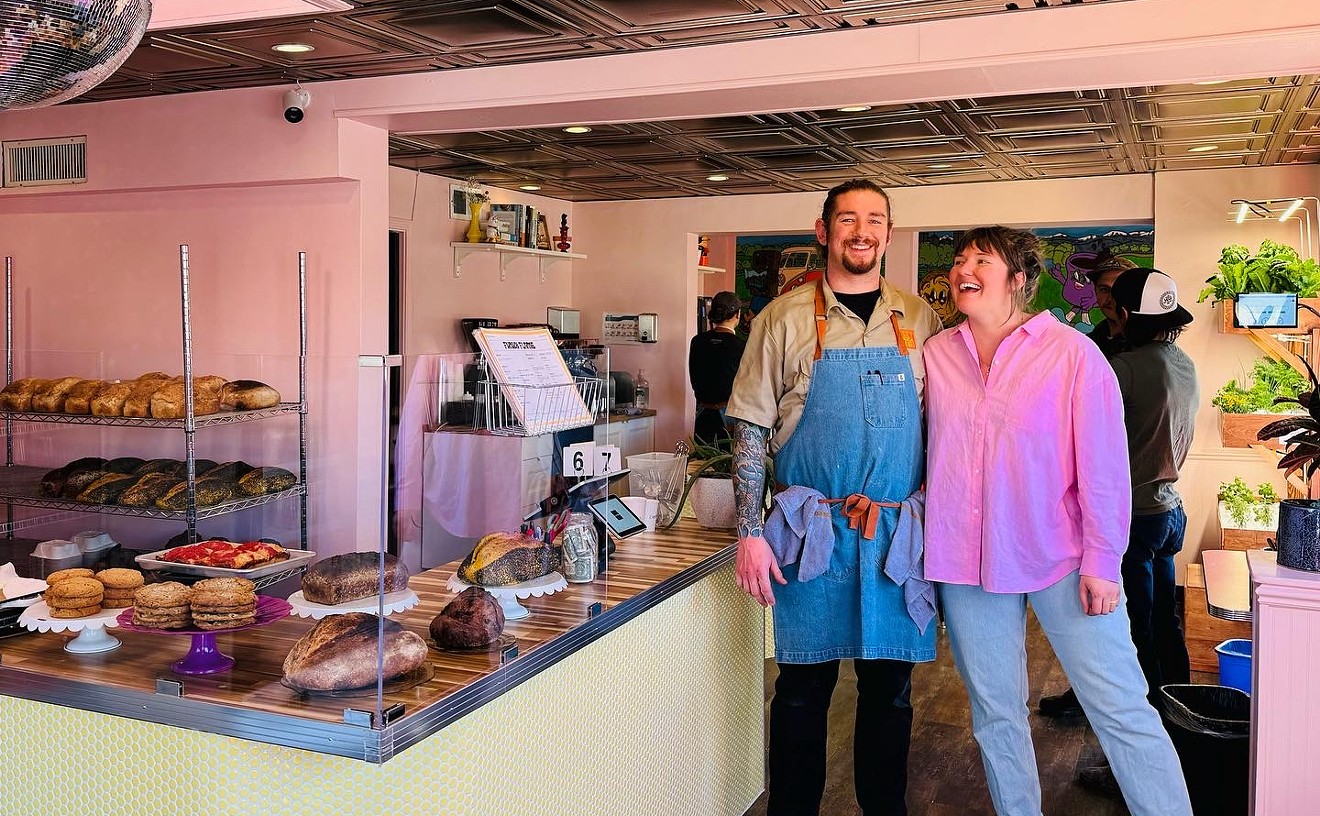To most Denver residents, Casa Bonita is the pink funhouse on West Colfax Avenue that disguises itself as a restaurant. For Mexican artist Cristóbal Gracia, Casa Bonita is like a time machine back to his childhood in Mexico — and a strange vision into Mexican culture.
Gracia is one of two artists from Mexico City participating in the Biennial of the Americas Ambassador program, a ten-week artist exchange. While Gracia’s work in Denver is focused on Herbert Bayer's Articulated Wall in the Denver Design District, he’s found time to visit Casa Bonita not once but twice, and is planning on at least one more trip before he heads back to Mexico at the end of April.
“To be honest, I first learned about Casa Bonita from South Park,” Gracia says, referring to the Comedy Central show created by Trey Parker and Matt Stone. “I knew I had to visit it because it was built with a certain idea of reenactment, like the Mexican Disneyland.”
As an artist, Gracia is very interested in replications of artwork from one culture to another. For example, the Articulated Wall — the subject of Gracia’s Biennial of the Americas project — was first created by Herbert Bayer for the 1968 Olympic Games in Mexico; the Denver Design District commissioned an exact replica to be built in 1985. Part of Gracia’s fascination with Casa Bonita is the replicated Mexican sculpture. “Finding out that the fountain in front of Casa Bonita was shipped in from Mexico made me interested in the rest of the sculpture of the building and the copying of Mexican monuments,” Gracia says.
Gracia points out that the facade at the top of Casa Bonita is a replica of Cuitlahuac; the original stands in the Paseo de la Reforma in Mexico City.
“In the end, the representations at Casa Bonita are completely fake, but I find it horrible and beautiful at the same time,” Gracia says. “It’s all very backwards because Casa Bonita is the exact opposite of the real Mexico, but I find the strangeness to create a middle point between our cultures.”
And the atmosphere at Casa Bonita reminds him of an earlier time in Mexico City, especially with the arcade and cliff divers. “Walking into Casa Bonita is like a time machine for me,” Gracia explains. “Most of the games in Casa Bonita’s arcade don’t even function, but they are the exact same games I would want to play when I was six or seven years old. It was also really interesting to see all of these old posters of former Mexican celebrities.”
While Gracia sees different cultural representations at Casa Bonita than do most visitors, he agrees with almost everyone that the experience far outweighs the food. “Casa Bonita is so backwards because the food is nothing close to Mexican food,” Gracia says. “But what I’ve learned from going to Casa Bonita with people is that they don’t even eat the food; it’s just a cover charge to get in, really.”
Gracia is currently finishing his project for the Biennial of the Americas, which will run from July 14 through July 18, and he hopes to incorporate footage from Casa Bonita into his exhibit. His documentation of the historic Denver landmark will supplement photos and footage from his upcoming French-fry eating competition set for Wednesday, April 15, at the Articulated Wall. Read all about that contest here.
For more about Cristóbal’s experiences in Denver and his fascination with Casa Bonita, visit the ArtPlant blog.
[
{
"name": "Air - MediumRectangle - Inline Content - Mobile Display Size",
"component": "12017618",
"insertPoint": "2",
"requiredCountToDisplay": "2"
},{
"name": "Editor Picks",
"component": "17242653",
"insertPoint": "4",
"requiredCountToDisplay": "1"
},{
"name": "Inline Links",
"component": "18838239",
"insertPoint": "8th",
"startingPoint": 8,
"requiredCountToDisplay": "7",
"maxInsertions": 25
},{
"name": "Air - MediumRectangle - Combo - Inline Content",
"component": "17261320",
"insertPoint": "8th",
"startingPoint": 8,
"requiredCountToDisplay": "7",
"maxInsertions": 25
},{
"name": "Inline Links",
"component": "18838239",
"insertPoint": "8th",
"startingPoint": 12,
"requiredCountToDisplay": "11",
"maxInsertions": 25
},{
"name": "Air - Leaderboard Tower - Combo - Inline Content",
"component": "17261321",
"insertPoint": "8th",
"startingPoint": 12,
"requiredCountToDisplay": "11",
"maxInsertions": 25
}
]











